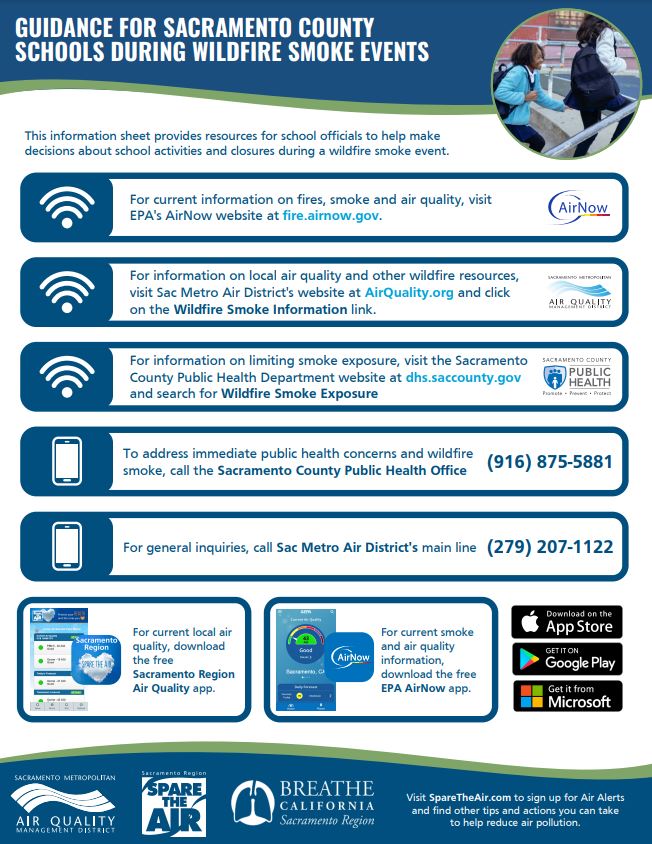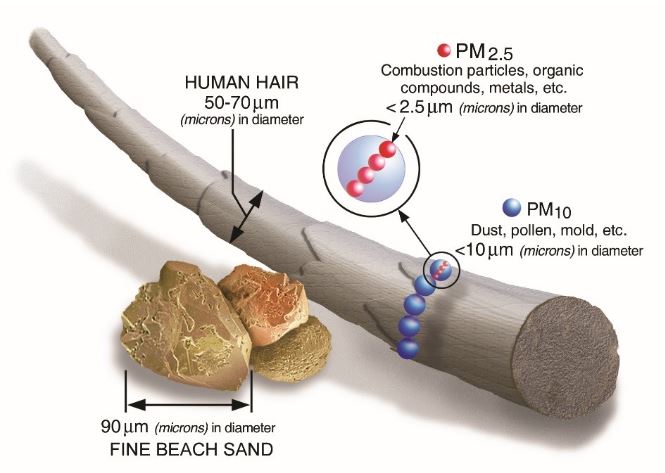
Preparing Yourself for a Wildfire Smoke Outbreak

Most of us know by now that it is not safe to breathe wildfire smoke, or any form of air pollution, especially for those who are more vulnerable like children, those who are pregnant, the elderly, and those with certain lung or heart diseases, or diabetes (American Lung Association and CDC.gov). As an air quality and lung health organization, it is our topmost priority to make sure everyone has the resources they need to protect their lungs. Wildfire smoke can be made up of tiny particulate matter (PM2.5) that is small enough to get into our lungs and irritate the passageways. This particulate matter can be made up of anything that crosses a fire’s path, including acids, inorganic compounds, organic chemicals, soot, metals, soil or dust particles, pollen, and mold spores (EPA.gov).
A few years back, during the 2018 Camp Fire, organizations like ours received calls wondering what to do to stay safe and help those in your care (students, staff, etc.). It became evident that there was not clear guidance for our residents during these wildfire smoke episodes and most residents wisely opted to just stay indoors. Thanks to Assemblymember McCarty, Assembly Bill 661 was created, tasking the Sacramento Metropolitan Air Quality Management District (Air District) with preparing a wildfire smoke air pollution emergency plan. The Air District asked us to help with outreach and gather input on what guidance already exists and what resources could be added during a wildfire smoke or air pollution emergency.

BREATHE worked hard gathering feedback from Sacramento County school administrators, public agencies, businesses, and local officials like city managers and local philanthropic leaders. Although COVID-19 delayed our work and stopped us from going out in the community, we were able to work around this by meeting with folks over Zoom and working with LPC Consulting to help create and analyze a survey (a report for which is located on our webpage), which helped to narrow down the best practices obtained from the feedback we collected. Collecting the community’s best practices and becoming aware of what they needed most was vital to help create this plan. The Air District turned this feedback and survey results into a set of tailored guidelines. We are happy to report that the Air District Board adopted the plan in September 2022.

Prior to this recently compiled guideline, BREATHE and the Air District worked together to create infographics that were digestible for Sacramento County residents to use best practices for keeping themselves and others safe. VideoVets was hired to make a short informational wildfire smoke protection video to help spread the word to keep students safe. This video was then duplicated into five of the most commonly spoken languages in Sacramento County after English. During wildfire smoke events, we highly recommend monitoring a real time Fire and Smoke Map to stay up to date on air quality readings. You can compare these readings to charts like the one above to see what recommended actions you should take at the time. Now all of these sources and more can be found on our Wildfire Smoke Resources page for you to explore and educate yourself before a wildfire smoke outbreak begins, or for any poor air quality day.